




Your support is critical to our success.
Accepted Scientific Name: Mammillaria prolifera (Mill.) Haw.
Syn. Pl. Succ. 177 (1812)
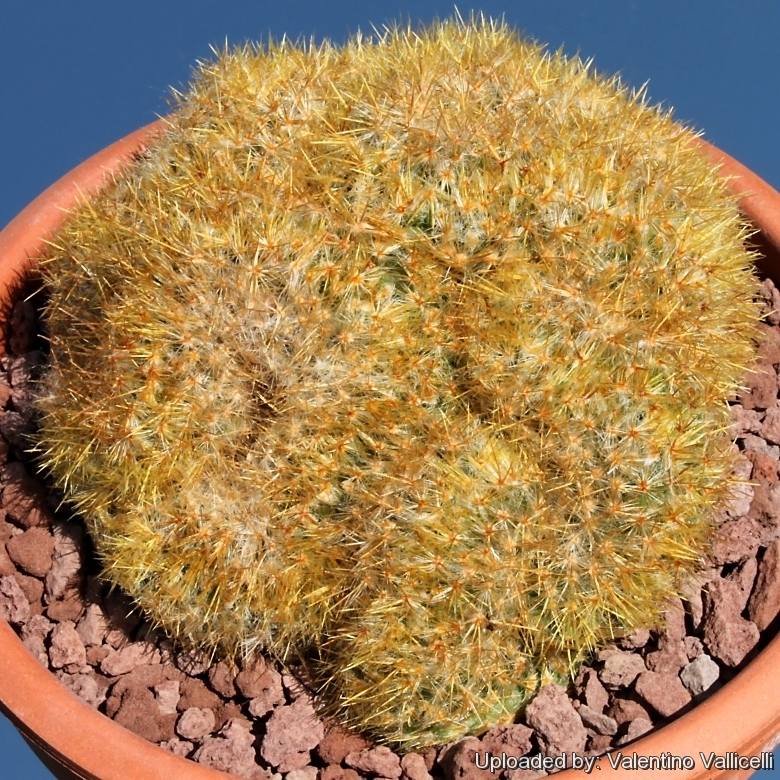
Origin and Habitat: Garden origin.
Synonyms:
Mammillaria prolifera (Mill.) Haw.
Syn. Pl. Succ. 177 (1812)
Synonymy: 19
- Mammillaria prolifera (Mill.) Haw.
- Cactus mammillaris var. prolifer Aiton
- Cactus proliferus Mill.
- Cactus stellatus Willd.
- Chilita prolifera (Mill.) Orcutt
- Ebnerella prolifera (Mill.) Buxb.
- Escobariopsis prolifera (Mill.) Doweld
- Neomammillaria prolifera (Mill.) Britton & Rose
- Mammillaria glomerata (Lamarck) DC.
- Cactus glomeratus Lamarck
- Mammillaria prolifera f. cristata hort.
- Mammillaria pusilla (DC.) Sweet
- Cactus pusillus DC.
- Cactus pusillus Kuntze
- Mammillaria pusilla var. major Pfeiff.
- Mammillaria pusilla f. major (Pfeiff.) Schelle
- Mammillaria stellaris Haw.
- Mammillaria stellata Haw. in Till.
- Cactus haworthianus Kuntze
Mammillaria prolifera subs. arachnoidea (D.R.Hunt) D.R.Hunt
Mammillaria Postscripts 6: 6 6 1997.
Synonymy: 3
- Mammillaria prolifera subs. arachnoidea (D.R.Hunt) D.R.Hunt
- Escobariopsis prolifera subs. arachnoidea (D.R.Hunt) Doweld
- Mammillaria prolifera var. arachnoidea D.R.Hunt
Mammillaria prolifera subs. haitiensis (K.Schum.) D.R.Hunt
Mammillaria Postscripts 6: 6. 1997
Synonymy: 6
- Mammillaria prolifera subs. haitiensis (K.Schum.) D.R.Hunt
- Escobariopsis prolifera subs. haitiensis (K.Schum.) Doweld
- Mammillaria prolifera var. haitiensis (K.Schum.) Borg
- Mammillaria prolifera f. haitiensis (K.Schum.) Krainz
- Mammillaria pusilla var. haitiensis K.Schum. in Gürke
- Neomammillaria prolifera var. haitiensis (K.Schum.) Y.Itô
Mammillaria prolifera subs. multiceps (Salm-Dyck) U.Guzmán
Cactaceae Syst. Init. 16: 18 (11 Oct. 2003) Remarks: first published in U.Guzmán et al., Catálogo Cact. Mex.: 152 (May 2003), without basionym reference
Synonymy: 25
- Mammillaria prolifera subs. multiceps (Salm-Dyck) U.Guzmán
- Cactus multiceps (Salm-Dyck) Kuntze
- Chilita multiceps (Salm-Dyck) Orcutt
- Ebnerella multiceps (Salm-Dyck) Buxb.
- Mammillaria multiceps Salm-Dyck
- Mammillaria prolifera var. multiceps (Salm-Dyck) Borg in Borg
- Mammillaria pusilla f. multiceps (Salm-Dyck) Schelle
- Neomammillaria multiceps (Salm-Dyck) Britton & Rose
- Neomammillaria prolifera var. multiceps (Salm-Dyck) Y.Itô
- Mammillaria multiceps var. elongata Meinsh.
- Mammillaria multiceps var. grisea Meinsh.
- Mammillaria multiceps var. humilis Meinsh.
- Mammillaria multiceps var. perpusilla Meinsh.
- Mammillaria prolifera var. perpusilla (Meinsh.) B.Hofmann
- Mammillaria prolifera subs. texana (Engelm.) D.R.Hunt
- Cactus stellatus var. texanus (Engelm.) J.M.Coult.
- Cactus texanus (Engelm.) Small
- Escobariopsis prolifera subs. texana (Engelm.) Doweld
- Mammillaria multiceps var. texana (Engelm.) F.M.Knuth
- Mammillaria prolifera var. texana (Engelm.) Borg
- Mammillaria prolifera f. texana (Engelm.) Krainz
- Mammillaria pusilla var. texana Engelm.
- Mammillaria pusilla f. texana (Engelm.) Schelle
- Mammillaria texana (Engelm.) Poselg.
- Neomammillaria prolifera var. texana (Engelm.) Y.Itô
Mammillaria prolifera subs. zublerae (Repp.) D.R.Hunt
Mammillaria Postscripts 6: 6 (1997)
Synonymy: 4
- Mammillaria prolifera subs. zublerae (Repp.) D.R.Hunt
- Escobariopsis prolifera subs. zublerae (Repp.) Doweld
- Mammillaria zublerae Repp.
- Mammillaria cielensis Mart.-Aval., Golubov, S.Arias & Villarreal
Description: This is a very nice crested Mammillaria, easily recognizable for its dense hairs among the dense yellow spines, covering the stems. It can form in age a large convoluted mound. The standard Mammillaria proliferaSN|9303]]SN|9303]] is one of the smallest members of this large and diverse genus of low-growing cacti that will clump profusely eventually forming thorn bundles 30-50 cm across or even wider. It is very free-growing and produces flowers in considerable profusion, but it is particularly decorative for its bright red fruits that last for weeks.
Roots: Fibrous.
Stems: Soft-textured, fan shaped, forming tangled, brain-like mound, dark green and about 3 in width. Without latex. Axil almost naked or with few to several long hair-like bristles.
Tubercles: Cylindrical to conical, soft about 8 mm long, spreading and arranged in 5 -8 spiral lines.
Radial spine: 25-40, often intergrading with the centrals, straight or twisted, yellow to whitish, bristly to almost hairlike, 3-12 mm long.
Central spine: 5-12, much stouter, slender, needle-like, straight, pubescent, orangish, yellow, with darker tips, 4-9 mm long.
Flower: Funnel-shaped, borne on old axils but toward top of the plant. Cream or pinkish-yellow coloured, 10-18 mm long. Inner tepals erect, acute, cream-white-yellow, outer tepals with brownish mid-rib; filament pale rose coloured; anthers at first deflexed inward; style shorter than filaments; stigma lobes 3, yellow.
Fruit: Club shaped to cylindrical, somewhat curved, red, 15-20 mm long crowned by persistent dry perianth. The fruit are edible with a marked flavour of strawberries, along with a pleasant acidity. Some say that it has the most strawberry taste among cacti.
Seed: Black, pitted slightly depressed; aril white, triangular.
Subspecies, varieties, forms and cultivars of plants belonging to the Mammillaria prolifera group
 Mammillaria prolifera (Mill.) Haw.: (subsp. prolifera) has stems 6-7 cm in diameter, cream to pinkish yellow flowers and yellow spines. Distribution: throughout much of the Caribbean.
Mammillaria prolifera (Mill.) Haw.: (subsp. prolifera) has stems 6-7 cm in diameter, cream to pinkish yellow flowers and yellow spines. Distribution: throughout much of the Caribbean.- Mammillaria prolifera subs. arachnoidea (D.R.Hunt) D.R.Hunt: has slender, fine central spines and quite narrow funnelform flowers. Distribution: Tamaulipas and Hidalgo.
 Mammillaria prolifera f. cristata hort.: Crested form.
Mammillaria prolifera f. cristata hort.: Crested form.- Mammillaria prolifera subs. haitiensis (K.Schum.) D.R.Hunt: has stems to 7 cm in diameter, cream-white-yellow flowers and more spines than the type species, giving it a more whitish appearance. Distribution: endemic of Hispaniola.
 Mammillaria prolifera subs. multiceps (Salm-Dyck) U.Guzmán: has white and brown spines. Distribution: USA (Texas) and northeastern Mexico (Coahuila, Tamaulipas, Nuevo Leon and San Luis Potosi).
Mammillaria prolifera subs. multiceps (Salm-Dyck) U.Guzmán: has white and brown spines. Distribution: USA (Texas) and northeastern Mexico (Coahuila, Tamaulipas, Nuevo Leon and San Luis Potosi).- Mammillaria prolifera subs. texana (Engelm.) D.R.Hunt: has whitish or else translucent, honey-yellow spines and dirty yellow,pinkish or almost tan flowers(same as subsp. multiceps?). Distribution: Southern Texas along the Rio Grande river.
- Mammillaria prolifera subs. zublerae (Repp.) D.R.Hunt
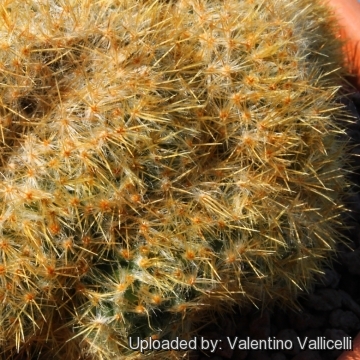
Mammillaria prolifera f. cristata Photo by: Valentino Vallicelli
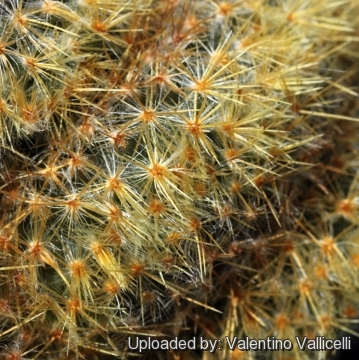
Mammillaria prolifera f. cristata Photo by: Valentino Vallicelli
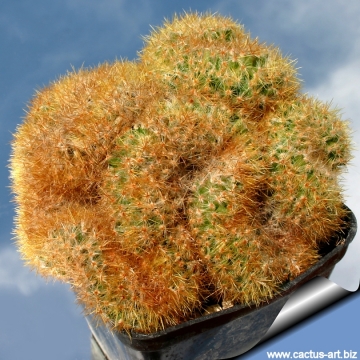
Mammillaria prolifera f. cristata Photo by: Cactus Art
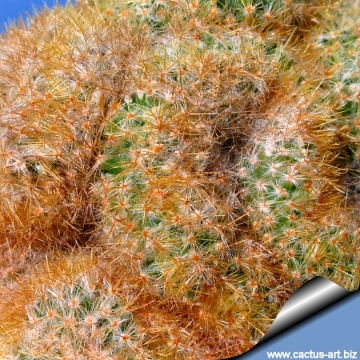
Mammillaria prolifera f. cristata Photo by: Cactus Art
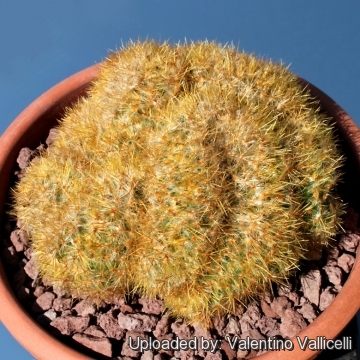
Mammillaria prolifera f. cristata Photo by: Valentino Vallicelli
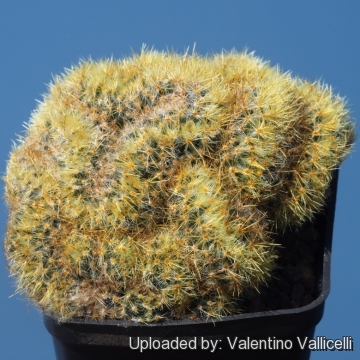
Mammillaria prolifera f. cristata Photo by: Valentino Vallicelli
Cultivation and Propagation: This is an easy to grow cultivar, just as a classic cactus, don't requires any special treatment. It is sometime seen as a grafted plant but grows very well on its own roots too.
Soil: Use mineral well permeable mineral soil with little organic matter (peat, humus).
Exposure: They need a good amount of light shade to full sun this help to keep the plants healthy, although slow growth.
Watering: Water sparingly from March till October (weekly during summertime, if the weather is sunny enough) , with a little fertilizer added. Less or no water during cold winter months, or when night temperatures remain below 10° to prevent root loss. It is sensitive to overwatering (rot prone).
Fertilization: Feeding may not be necessary at all if the compost is fresh then, feed in summer only if the plant hasn't been repotted recently. Do not feed the plants from September onwards as this can cause lush growth which can be fatal during the darker cold months.
Hardiness: Keep perfectly dry in winter at temperatures from 5 to 15 degrees centigrade. (but it is relatively cold resistant and hardy to -5° C, or possibly colder for short periods) In the rest period no high atmospheric humidity!! (Temperature Zone: USDA 9-11)
Crested growth: Unlike 'monstrose' varieties of plants, where the variation from normal growth is due to genetic mutation, crested growth can occur on normal plants. Sometimes it's due to variances in light intensity, or damage, but generally the causes are unknown. A crested plant may have some areas growing normally, and a cresting plant that looks like a brain, may revert to normal growth for no apparent reason. If you have any of the crested part left you need to remove the normal growth and leave the crested part behind this will need to be done regularly.
Propagation: By vegetative propagation, division of larger clumps, grafting or stem cuttings from adult plants. Plants are usually grafted onto column-shaped cacti but proved to be able to produce their own roots if degrafted. Cuttings will take root in a minimum temperature of 20° C (but better in hot weather). Cuttings of healthy shoots can be taken in the spring and summer. Cut the stem with a sharp, sterile knife, leave the cutting in a warm, dry place for a week or weeks (depending on how thick the cutting is) until a callus forms over the wound. Once the callus forms, the cutting may be inserted in a container filled with firmed cactus potting mix topped with a surface layer of coarse grit. They should be placed in the coarse grit only; this prevents the cut end from becoming too wet and allows the roots to penetrate the rich compost underneath. The cuttings should root in 2 to 6 weeks. Large crested piece must be placed on the soil surface without burying the plant base down in the soil.
| Your Actions | |
|---|---|
| Back to Mammillaria index | |
| Back to Cactaceae index | |
 |
Back to Cacti Encyclopedia index |
Privacy stantement - Terms and conditions - How to cite - About us - Feedback - Donate




